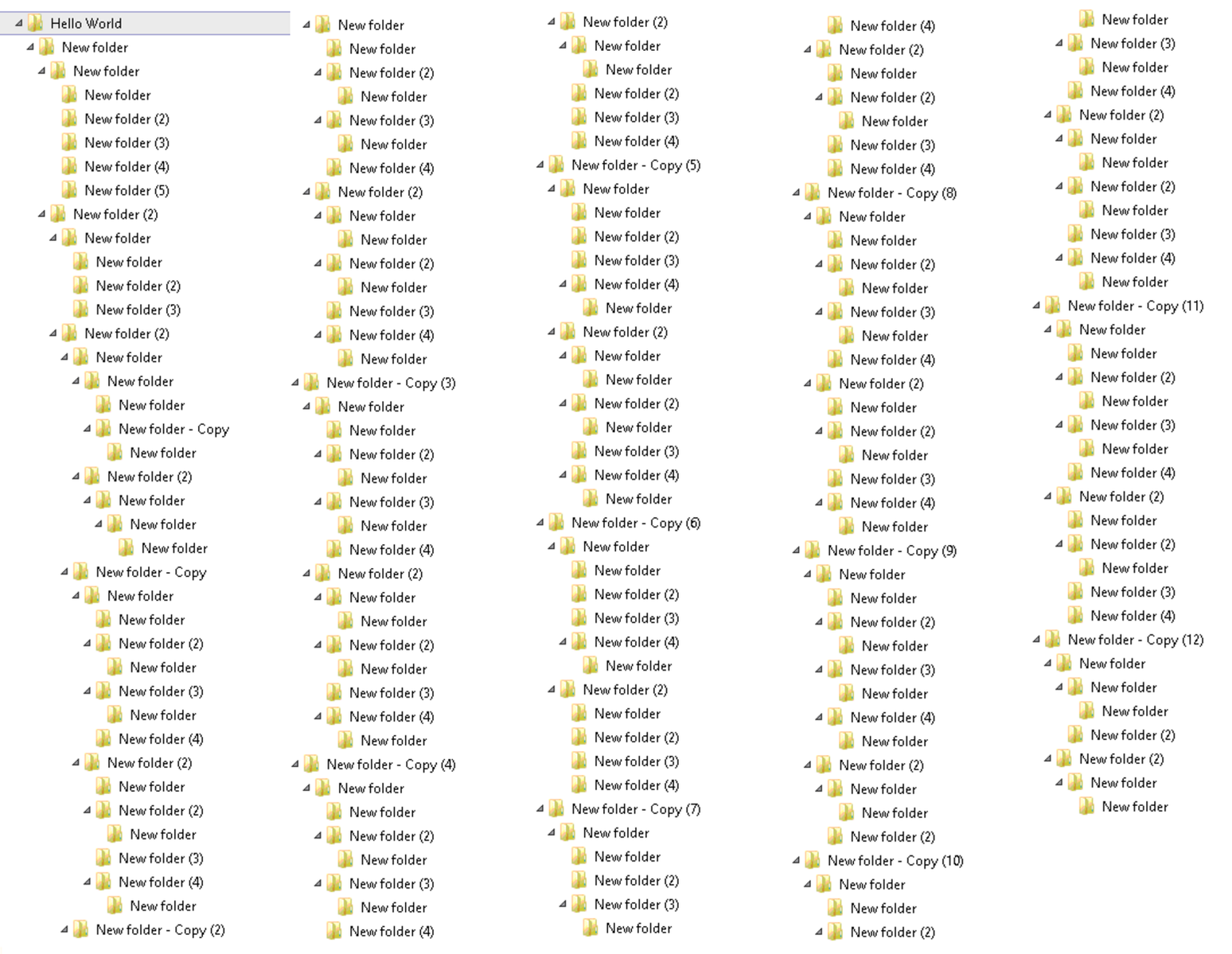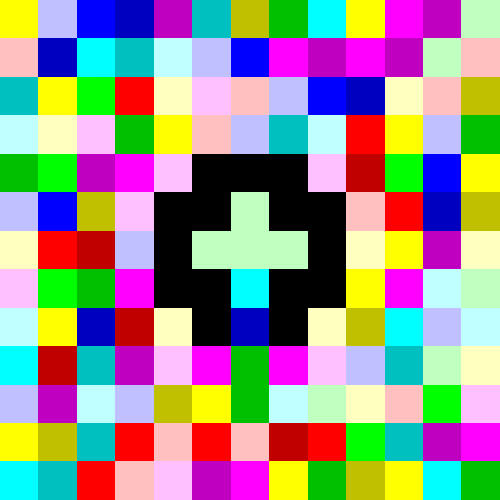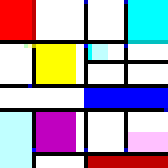There are thousands of programming languages are invented and only about hundred of programming languages are commonly used to build software. Among this thousands of programming languages, there are some weird type of programming languages can be also found. These programming languages are seems to be called weird, since their programming syntax and the way it represent its code. In this blog we will look into some of these language syntax.
Legit

Have you ever wonder, when you come to a Github project that print hello world program, but you cannot see any codes or any content. Check this link https://github.com/blinry/legit-hello and you will see nothing in this repository. But trust me, there is hidden code in this project.
If you see the commit section, you can reveal the magic. Yeah, you are right. Its storing hello world code in inside the git commit history. If you clone this project and run the following command, then you can see the hidden code in this project.
git log --graph --oneline
Here are the supported instructions.
- "[<tag>]": jump to the specified Git tag. For example, [loop] will jump to the tag loop.
- "quit": stop the program.
- "get": read a char from standard input and place its ASCII value on the stack. On EOF, push a 0.
- "put:' pop top stack value and write it to standard output as a char. The value is always truncated to an unsigned byte.
- "<Number>": push the specified integer on the stack. For example, 42 will push the value 42.
- "<Letters>": unescape string, then push the individual ASCII characters on the stack. For example, "Hi\n" will push the numbers 72, 105, and 10.
- "dup": duplicate top stack value
- "pop": pop top stack value and discard it
- "add": pop two topmost stack values, add them, push result on the stack
- "sub": pop two topmost stack values, subtract top one from bottom one, push result on the stack
- "cmp": pop two topmost stack values, pushes 1 if bottommost one is larger, 0 otherwise
- "read": place value of current tape cell on the stack
- "write": pop top stack value and write it to the current tape cell
- "left": pop top stack value, move tape head left for that many places
- "right": pop top stack value, move tape head right for that many places
Legit programming language source code hosted in Github and you can tryout yourself. Read out more about Legit.
Folder

Here's another one, which does not maintain any code inside its repository. This language keep its code as folders. Instructions are read according to the oder of the folders. Inside these folder, there are three folders to represent Type, Command and Expression. Number of folders in inside these folders represent relevant mapping with type, command or expression. It can be represented as follows.
| Command | # of Folder | Details |
| if | 0 folder | Second sub-folder holds expression, third holds list of commands |
| while | 1 folder | Second sub-folder holds expression, third holds list of commands |
| declare | 2 folders | Second sub-folder holds type, third holds var name (in number of folders) |
| let | 3 folders | Second holds var name (in number of folders), third holds expression |
| 4 folders | Second sub-folder holds expression | |
| input | 5 folders | Second sub-folder holds var name |
Read full description of this language in here
Befunge
This is another interesting programming language which represent its code in two dimensional space. Take a look following code of infinite loop.
>v
^<
Did you get that? Execution start with first line ">" character. It mean to execute next instruction in right side. right side instruction is "v". This means to execute down instruction. This continues as an infinite loop. Here I added some of its instructions.
- "+" Addition: Pop two values a and b, then push the result of a+b
- "-" Subtraction: Pop two values a and b, then push the result of b-a
- "*" Multiplication: Pop two values a and b, then push the result of ab
- "/" Integer division: Pop two values a and b, then push the result of b/a, rounded down. According to the specifications, if a is zero, ask the user what result they want.
- "%" Modulo: Pop two values a and b, then push the remainder of the integer division of b/a.
- "!" Logical NOT: Pop a value. If the value is zero, push 1; otherwise, push zero.
- "`" Greater than: Pop two values a and b, then push 1 if b>a, otherwise zero.
- ">" PC direction right
- "<" PC direction left
- "^" PC direction up
- "v" PC direction down
- "?" Random PC direction
- "_" Horizontal IF: pop a value; set direction to right if value=0, set to left otherwise
Read complete language specifications here. 3D represented languages also built called "Suzy" based on this language. Here below an example of finding factorial with Befunge language
&>:1-:v v *_$.@
^ _$>\:^
Brainfuck
This language was invented in 1993, as an attempt to create the smallest possible compiler. This compiler allow eight commands to write program and operate based on memory cell which also known as tapes. Here is the list of command Brainfuck support.
- ">" Move the pointer to the right
- "<" Move the pointer to the left
- "+" Increment the memory cell under the pointer
- "-" Decrement the memory cell under the pointer
- "." Output the character signified by the cell at the pointer
- "," Input a character and store it in the cell at the pointer
- "[" Jump past the matching ] if the cell under the pointer is 0
- "]" Jump back to the matching [ if the cell under the pointer is nonzero
Here below how hello world application implemented in Brainfuck language.
1 +++++ +++ Set Cell #0 to 8
2 [
3 >++++ Add 4 to Cell #1; this will always set Cell #1 to 4
4 [ as the cell will be cleared by the loop
5 >++ Add 4*2 to Cell #2
6 >+++ Add 4*3 to Cell #3
7 >+++ Add 4*3 to Cell #4
8 >+ Add 4 to Cell #5
9 <<<<- Decrement the loop counter in Cell #1
10 ] Loop till Cell #1 is zero
11 >+ Add 1 to Cell #2
12 >+ Add 1 to Cell #3
13 >- Subtract 1 from Cell #4
14 >>+ Add 1 to Cell #6
15 [<] Move back to the first zero cell you find; this will
16 be Cell #1 which was cleared by the previous loop
17 <- Decrement the loop Counter in Cell #0
18 ] Loop till Cell #0 is zero
19
20 The result of this is:
21 Cell No : 0 1 2 3 4 5 6
22 Contents: 0 0 72 104 88 32 8
23 Pointer : ^
24
25 >>. Cell #2 has value 72 which is 'H'
26 >---. Subtract 3 from Cell #3 to get 101 which is 'e'
27 +++++ ++..+++. Likewise for 'llo' from Cell #3
28 >>. Cell #5 is 32 for the space
29 <-. Subtract 1 from Cell #4 for 87 to give a 'W'
30 <. Cell #3 was set to 'o' from the end of 'Hello'
31 +++.----- -.----- ---. Cell #3 for 'rl' and 'd'
32 >>+. Add 1 to Cell #5 gives us an exclamation point
33 >++. And finally a newline from Cell #6
This can be represented in one line as follows.
++++++++[>++++[>++>+++>+++>+<<<<-]>+>+>->>+[<]<-]>>.>---.+++++++..+++.>>.<-.<.+++.------.--------.>>+.>++.
Piet

As you see it, It is programming language, that programmer need to color a grid instead of coding words. Pointer used to move around the bitmap image and execute command relevant to each color code. There are twenty colors used to represent command and white color does not represent any operation. when the pointer tries to enter a black region, the rules of choosing the next block are changed instead. Here below the sample program to print "Piet".

Malbolge
One last programming language! This is known as "Programming from hell". The idea of this language is that programming should be hard. Therefore there is no point of discussing language syntax in this blog. Interesting fact of this language is that, even the inventor of this language was not even write a program by him self. However, Here an example program of hello world in Malbolge language.
(=<`#9]~6ZY32Vx/4Rs+0No-&Jk)"Fh}|Bcy?`=*z]Kw%oG4UUS0/@-ejc(:'8dc
Conclusion
I am not going to discuss all the programming languages here, since there are lot of it. I have list down below multiple programming languages that I have found for further reading. Interesting fact about most of these languages was these are Turing complete. Which mean, you can implement any computer program that other programming languages can do. Even though these programming languages are seems useless, it open our mind to look things we seen to see differently.
Hope you enjoy reading this article. If you have any comment, this is my tweet account. Follow me for more interesting stories. Feel free to comment down your thoughts. See you in another article. Cheers :)
This comment has been removed by the author.
ReplyDeleteI think this is one of the most significant information for me. And I’m glad reading your article. Thanks for sharing!
ReplyDeleteDot Net Training in Chennai | Dot Net Training in anna nagar | Dot Net Training in omr | Dot Net Training in porur | Dot Net Training in tambaram | Dot Net Training in velachery
This was not just great in fact this was really perfect your talent in writing was great.
ReplyDeleteData Science Course in Bangalore
Superb Information, I really appreciated with it, This is fine to read and valuable pro potential, I really bookmark it, pro broaden read. Appreciation pro sharing. I like it.
ReplyDeleteData Science Training in Bangalore
Truly great blog found to be very impressive to come across such an awesome content along with a unique content. Lots of appreciation to the blogger who took an initiative to write this particular blog. Thanks for sharing and keep posting such an informative content.
ReplyDelete360DigiTMG Cyber Security Course
Fantastic blog extremely good well enjoyed with the incredible informative content which surely activates the learners to gain the enough knowledge. Which in turn makes the readers to explore themselves and involve deeply in to the subject. Wish you to dispatch the similar content successively in future as well.
ReplyDelete360DigiTMG Digital Marketing Course
ReplyDeleteTop quality article with very informative information and found very knowledgeable thanks for sharing waiting for next blog.
Data Analytics Course Online
Really wonderful blog completely enjoyed reading and learning to gain the vast knowledge. Eventually, this blog helps in developing certain skills which in turn helpful in implementing those skills. Thanking the blogger for delivering such a beautiful content and keep posting the contents in upcoming days.
ReplyDeleteData Science certification in Bhilai
Really wonderful blog completely enjoyed reading and learning to gain the vast knowledge. Eventually, this blog helps in developing certain skills which in turn helpful in implementing those skills. Thanking the blogger for delivering such a beautiful content and keep posting the contents in upcoming days.
ReplyDeleteData Science certification in Bhilai
This comment has been removed by the author.
ReplyDeleteI enjoyed the coursework, the presentations, the classmates and the teachers. And because my company reimbursed 100% of the tuition, the only cost I had to pay on my own was for books and supplies. Otherwise, I received a free master's degree. All I had to invest was my time.
ReplyDeleteData Analytics Courses in Bangalore
This comment has been removed by the author.
ReplyDeleteI really enjoy reading all of your blogs. I just wanted to let you know that you have people like me who appreciate your work. Definitely a great article. Congratulations! The information you have provided is very helpful.
ReplyDeleteData Science Training in Pune
It's good to visit your blog again, it's been months for me. Well, this article that I have been waiting for so long. I will need this post to complete my college homework, and it has the exact same topic with your article. Thanks, have a good game.
ReplyDeleteIt's good to visit your blog again, it's been months for me. Well, this article that I have been waiting for so long. I will need this post to complete my college homework, and it has the exact same topic with your article. Thanks, have a good game.
He's really nice and mean. it's a really cool blog. The link is a very useful thing. You have really helped a lot of people who visit the blog and give them useful information.
ReplyDeleteDigital Marketing Course in Bangalore
I enjoyed the coursework, the presentations, the classmates and the teachers. And because my company reimbursed 100% of the tuition, the only cost I had to pay on my own was for books and supplies. Otherwise, I received a free master's degree. All I had to invest was my time.
ReplyDeleteBest Data Science Courses in Bangalore
AI Patasala aims at providing the most effective Python Training in Hyderabad. Our school has taught a lot of individuals and assisted them in locating good jobs.
ReplyDeletePython Course in Hyderabad with Placements
What an incredible message this is. Truly one of the best posts I have ever seen in my life. Wow, keep it up.
ReplyDeleteData Science Training in Bangalore